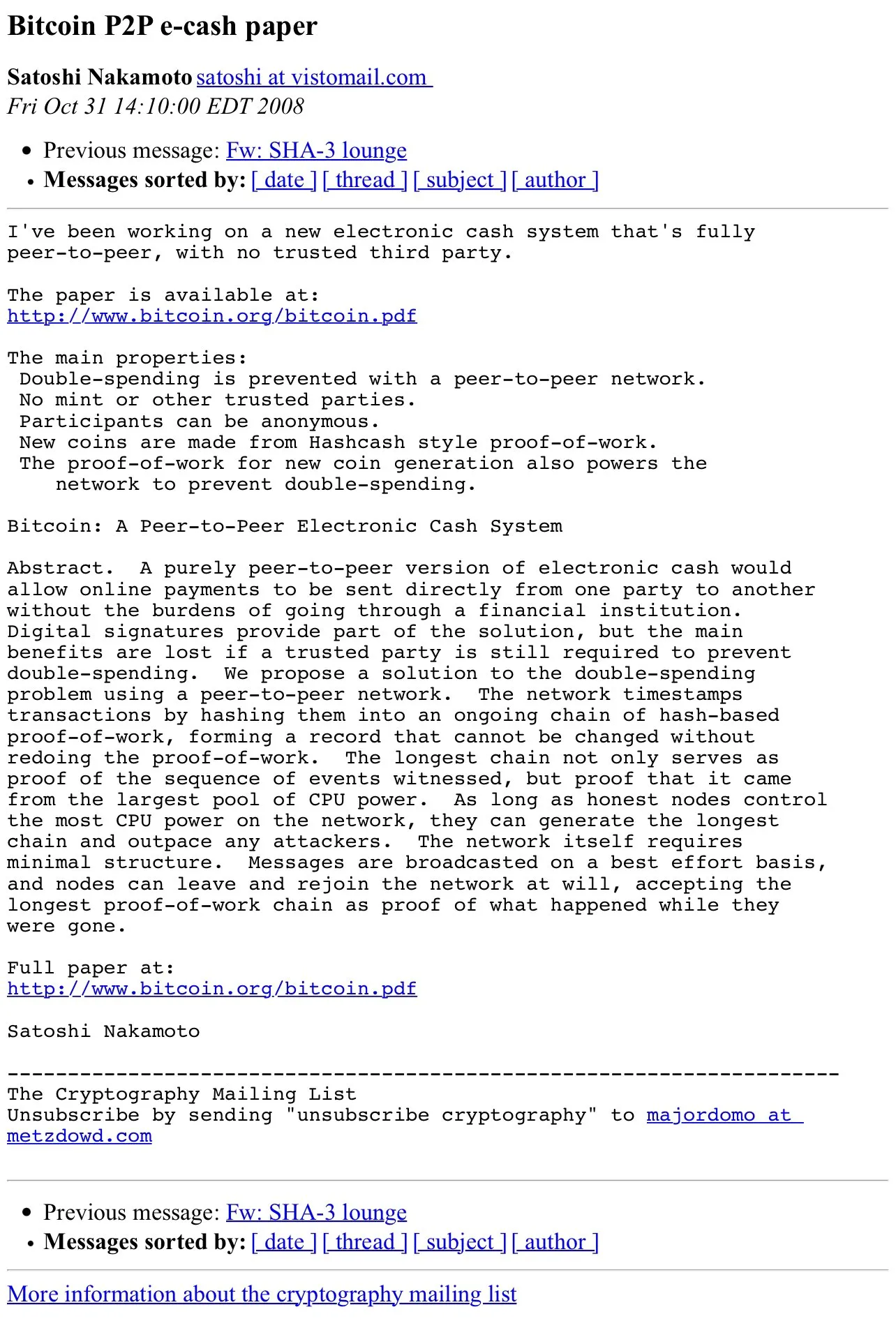15 Years of Bitcoin: A Revolution Continues
Bitcoin's innovation was its ability to separate money from state control. It provided users with the means to engage in peer-to-peer transactions, transcending geographical and political boundaries.

Fifteen years ago, an enigmatic figure named Satoshi Nakamoto lit the spark of a revolution. On October 31, 2008, Satoshi unveiled the Bitcoin whitepaper, introducing the world to a groundbreaking vision. Today, we celebrate the 15th anniversary of this historic milestone — a testament to Satoshi's enduring impact and the ongoing journey of cryptocurrencies.

Genesis of a Revolution
In a single email, Satoshi Nakamoto's words ignited a digital revolution: "I’ve been working on a new electronic cash system that’s fully peer-to-peer, with no trusted third party." Those words marked the birth of Bitcoin, a peer-to-peer electronic cash system aimed at bypassing intermediaries and ushering in a new era of financial freedom.
The Whitepaper: Bitcoin's Blueprint
Satoshi's vision was encapsulated in the Bitcoin whitepaper titled "Bitcoin: A Peer-to-Peer Electronic Cash System." The document tackled the double-spending problem that had plagued digital currencies. It proposed a solution: a decentralized network of nodes verifying and recording transactions through a proof-of-work consensus mechanism.
Just two months later, on January 3, 2009, the first block, or "genesis block," was mined, and Bitcoin was officially operational.
Standing on the Shoulders of Giants
Satoshi's genius lay in piecing together elements from pioneering projects. The Bitcoin whitepaper references Wei Dai's b-money and Adam Back's Hashcash, which integrated proof-of-work to curb spam and cyberattacks. The concept of timestamps, integral to Bitcoin's immutability, was attributed to Henri Massias, Scott Stornetta, Stuart Haber, and Dave Bayer.
Merkle trees, another innovation cited in the whitepaper, introduced a method for transaction verification through digital signatures. These components were the building blocks of Bitcoin, ingeniously interwoven to bring Satoshi's vision to life.
A Cash System with Unprecedented Freedom
Bitcoin's innovation was its ability to separate money from state control. It provided users with the means to engage in peer-to-peer transactions, transcending geographical and political boundaries. This invention marked a significant shift away from traditional financial systems, as users no longer needed to rely on banks and intermediaries.
The first real-world Bitcoin transaction occurred in May 2010 when Laszlo Hanyecz famously exchanged 10,000 Bitcoin for two pizzas, forever commemorated as "Bitcoin Pizza Day." It's a testament to how far the cryptocurrency has come.
From Skepticism to Mainstream Acceptance
In its early days, Bitcoin faced skepticism, especially regarding its potential use in criminal activities. However, the narrative has since evolved. Governments, institutions, and corporations worldwide have recognized its value and utility. The most significant endorsement came when El Salvador declared Bitcoin legal tender in September 2021, marking a groundbreaking moment in the cryptocurrency's journey.
As we reflect on the 15th anniversary of Satoshi Nakamoto's whitepaper, it is an opportunity to acknowledge the remarkable impact of this creation. Bitcoin's legacy continues to inspire the development of cryptocurrencies and blockchain technology, as we embark on an ongoing quest for innovation and financial transformation.
Satoshi Nakamoto's vision remains an enduring symbol of the boundless possibilities within the world of decentralized finance.




